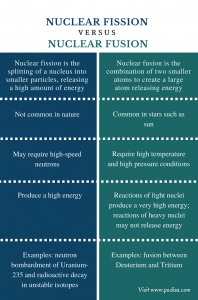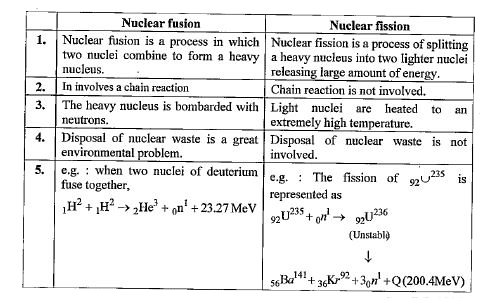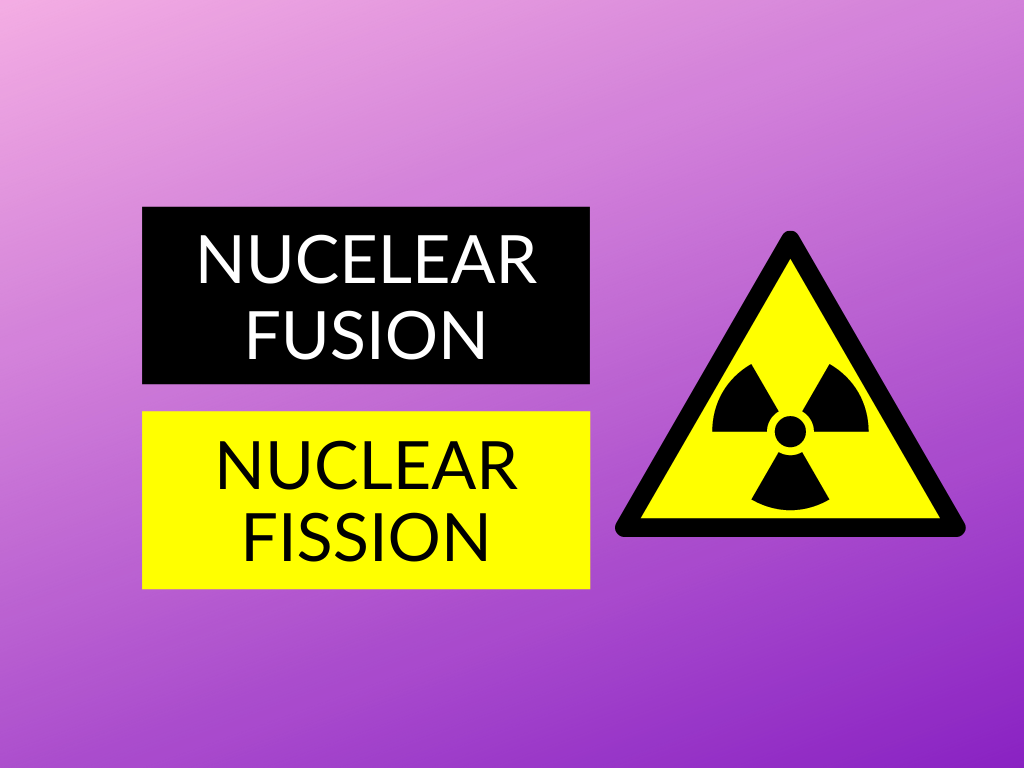
Nuclear power plants also make use of fission reactions. The atomic bomb follows nuclear fission reactions. Nuclear fission reactions lead to chain reactions which can be hazardous sometimes due to the meltdowns, whereas nuclear fusion reactions do not lead to any chain reactions. By-Products:įission reactions give off nuclear waste as a by-product, whereas fusion reactions do not have any such by-products. Occurrence:įusion reactions occur naturally, such as in heavenly bodies like stars and the sun, whereas fission reactions do not occur naturally. Fusion reactions require a temperature up to 10⁷ Kelvin.įor the fission reaction to occur, at least one external thermal neutron is needed, whereas no such external neutrons are needed for the fusion reactions. Whereas for the process of nuclear fusion, high temperature and high density are the necessary conditions for fusion to occur. These reactions can take place at room temperature. Environmental Conditions:įor a nuclear fission process to occur, high-speed electrons are required, and the substance should have a critical mass. More radioactive material is formed in the process of nuclear fusion than in nuclear fission. Energy Required:Ī very little amount of energy is required for the fission reactions, whereas a huge amount of energy is needed for fusion reactions.Įnergy densities of fusion reactions are much higher than that of fission reactions. The energy released during the nuclear fusion is too high to control, and hence, it is not used for the production of power.

In the process of fusion, the energy released is much more than the energy released during nuclear fission.

In the process of fission, the energy is released in the form of heat and radiation and is used by nuclear reactors to heat water and produce electricity. On the other hand, the process of fusion (or combining) of two isotopes of the lower mass (light nuclei) under extreme pressure and temperature conditions is called nuclear fusion. The bombardment of a large isotope (a heavy and unstable nucleus) by high-speed particles in order to break the isotope down into smaller fragments (nuclei) is called nuclear fission. Differences between Nuclear fission and Nuclear fusion: Definition: The fission of the nucleus could occur in two different ways, either by a collision of two nuclei or by the fission of a nucleus through an exothermic process. Nuclear fission is the process of splitting atoms in which two atoms are separated by a very thin wall of the nucleus that does not exist in nature this wall is called a fissure. The more the process is carried out, the more energy is released.

Fusion reactions involve a lot of energy.
#Difference between nuclear fission and nuclear fusion pdf full#
The nuclei of the atoms or molecules are a little larger than the other atoms or molecules and carry a full charge. Nuclear fusion is a process in which two atoms or molecules of the same element or different elements fuse to form a larger molecule of the element or elements.


 0 kommentar(er)
0 kommentar(er)
